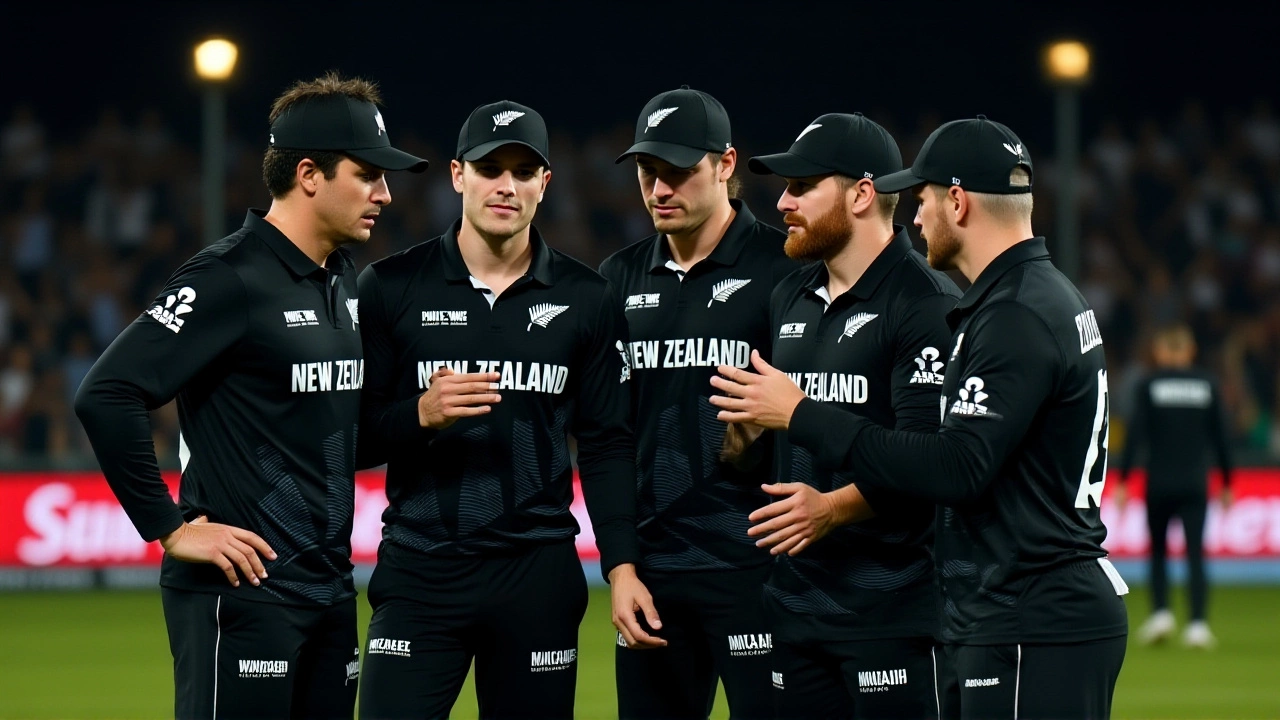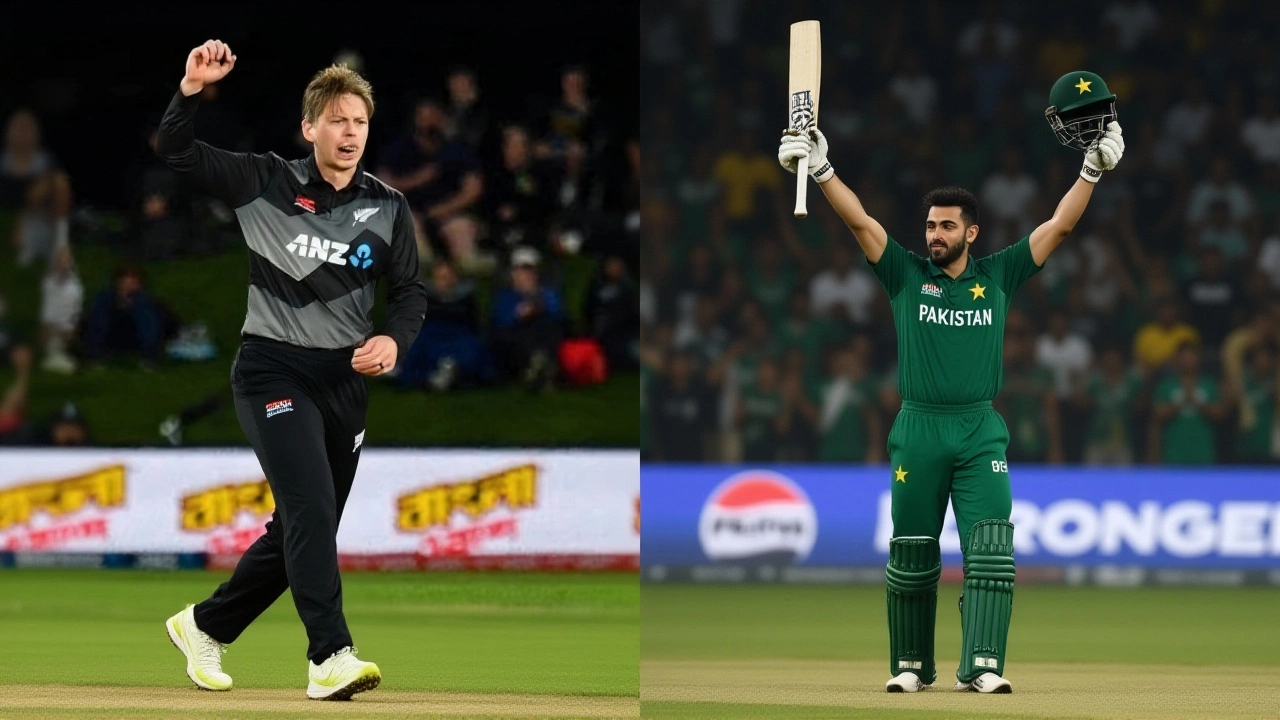When South Africa cricket team clinched their 42nd win out of 74 encounters against the New Zealand cricket team, the numbers sparked a fresh wave of debate among fans and analysts alike. The data, compiled by MyKhel.com on 14 October 2023, shows a clear edge for the Proteas, while five matches still sit without a result. head-to-head performance is now a pivotal storyline as both sides prepare for the upcoming 2025 Cricket World Cup.
Historical Overview of the NZ‑SA ODI Clash
Since their first One‑Day International meeting in 1975, the two nations have woven a tapestry of ups and downs. Early‑1990s games were dominated by South Africa’s powerful batting line‑up, but the 2000s introduced a more balanced duel, with New Zealand pulling off surprise victories on New Zealand soil. Over the decades, the win‑loss ratio settled at roughly 57‑38 in favour of the Proteas, with the remaining five fixtures ending as no‑results due to rain or technical interruptions.
Statistical Deep‑Dive: Overall and Recent Encounters
According to a granular breakdown from AIScore.com, New Zealand’s eight recorded wins in a specific subset came with an average first‑innings total of 291.4 runs, topping at a mammoth 690 and dipping to a modest 98. South Africa’s two wins in the same slice posted a 263.3‑run average, with a peak of 477 and a low of 100.
The last five ODI battles, however, paint a different picture. Seven victories for New Zealand against just two for South Africa suggest a recent swing in momentum—though the numbers clash with the broader 74‑match tally, highlighting how different platforms may isolate certain eras or tournament phases.
When teams chose to bat first, New Zealand secured seven wins at an average of 254 runs, peaking at 511. By contrast, South Africa’s two successful chases produced a 219‑run average, with a top score of 357. Chasing second, New Zealand’s bag‑filled seven wins averaged a modest 49.8 runs—reflecting low‑target victories—while South Africa’s two triumphs averaged 53.6 runs.
South Africa’s Record‑Smashing ODIs
Beyond the NZ‑SA rivalry, South Africa has carved its name into ODI lore through colossal aggregates. On 12 March 2006, at New Wanderers Stadium in Johannesburg, the Proteas and Australia combined for a staggering 872 runs (South Africa 438/9 chasing Australia’s 434/4). This match, marked as an ODI record‑aggregateJohannesburg, remains the highest‑scoring ODI in history.
Subsequent top‑five aggregates also featured South Africa: a 754‑run showdown in Delhi on 7 October 2023 against Sri Lanka, a 743‑run duel in Durban on 5 October 2016 versus Australia, a 730‑run clash in Johannesburg on 18 January 2015 against the West Indies, and a 694‑run encounter in Cape Town on 7 February 2017 versus Sri Lanka. These matches underscore the team’s ability to both post and chase mammoth totals.

Strategic Implications Ahead of the 2025 Cricket World Cup
Coaches and captains now pore over these statistics to fine‑tune toss decisions. The clear advantage South Africa enjoys when batting first—averaging 254 runs against New Zealand’s 219—suggests a potential preference for setting a target. Yet New Zealand’s recent success in low‑target chases hints they thrive under pressure, making the second‑innings game equally tantalising.
Jacques Kallis, South Africa’s legendary all‑rounder, still looms large in the data narrative. Jacques Kallis remains the nation’s highest run‑scorer and third‑highest wicket‑taker in ODI history, a dual feat that few modern players can emulate. His career totals—10,000+ runs and 250+ wickets—continue to serve as a benchmark for emerging talent.
As the 2025 Cricket World Cup approaches (scheduled to kick off in October 2025 across venues in the Indian sub‑continent), both squads are likely to weaponise these insights. South Africa may bank on its historical batting depth, while New Zealand could lean on its recent chase efficiency and disciplined bowling under pressure.
Why the Numbers Differ: Data Sources and Context
The discrepancies between MyKhel.com’s 74‑match ledger and AIScore.com’s narrower focus illustrate a broader challenge: cricket statistics are often sliced by competition type (World Cup, bilateral series, Champions Trophy) or by era (pre‑2000 vs post‑2000). A platform that emphasizes the last decade will naturally showcase a different win‑loss balance than one aggregating every ODI since the 1970s.
Fans scrolling through YouTube Shorts by creators like Jay Walking and Everet Almond in October 2023 observed the same friction, tagging their clips with #ct2025 and #kanewilliamson to spark conversation about the upcoming World Cup and New Zealand’s captaincy under Kane Williamson. Such social‑media churn keeps the rivalry fresh, even as the raw numbers continue to evolve.
Frequently Asked Questions
How does the NZ‑SA ODI record affect the 2025 World Cup draw?
The historic imbalance—South Africa’s 42 wins versus New Zealand’s 27—means the Proteas enter the group stage as statistical favourites. However, New Zealand’s recent chase success could tilt close matches, making the draw less predictable than raw totals suggest.
What are the key innings‑by‑innings trends in this rivalry?
South Africa tends to post higher totals when batting first (average 254 runs) and wins more often in that scenario. Conversely, New Zealand’s strength lies in low‑target chases, winning seven of ten matches when batting second with averages under 50 runs.
Why do different websites report varying win counts?
Platforms slice data by competition type, era, or even exclude no‑result games. MyKhel.com counts every official ODI, while AIScore.com may focus on matches after 2000, leading to the apparent mismatch in win totals.
Who is the most influential South African player in ODI history?
Jacques Kallis stands out as the all‑round powerhouse, holding the record for most runs and ranking third for wickets. His 10,000‑plus runs and 250 + wickets set a high bar for future generations.
What recent social‑media trends highlight this rivalry?
Short‑form videos on YouTube featuring creators like Jay Walking and Everet Almond have revived interest, using hashtags #ct2025 and #kanewilliamson to link the rivalry to the upcoming World Cup storylines.
